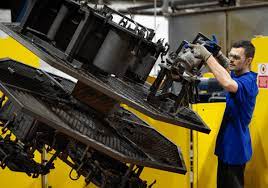Mastering the Art of Rotomolding: Techniques and Applications

Rotational molding is a method that was invented inside the later 1950s by Richard W. Boulanger, an engineer for Common Electric powered Plastics Business. On September 28, 1956, the initial patent was filed and given on October 17, 1960, as US Patent 2,912,991 – “Approach to Immersing Plastic materials Materials.” It offers given that become just about the most well-known options for generating plastic goods with sophisticated forms or thin wall space. With this article, we will check out Rotational Molding came to be.
The procedure is accustomed to make components with assorted shapes and forms, from sizeable vehicle pieces to little equipment goods. It’s typically carried out for an automated treatment utilizing computer manages for serving the molten plastic-type material into molds or directly onto areas that happen to be perpendicular on the axis of rotation.
Rotational molding has several positive aspects:
•It could create complicated three-dimensional designs easily.
•Resources awesome much faster when compared with other types of injections molding.
•Machine set up-up time is little due to the fact products goes as an alternative to changing jigs good quality management is easier because of shorter production runs (minimizing the quantity of problems) pricing is decrease per component since there’s no requirement for high-priced molds, and pattern time for many information is significantly below along with other approaches.
The procedure will begin by reloading a hopper with unprocessed plastic-type material pellets or chips, then providing these to the heated up barrel of an extruder exactly where these are melted under high pressure produce a “eco-friendly” tubing called a parison – typically about. The fungus closes about this piping while it’s still warm in order that each condition will take its closing contour since the substance cools down and hardens – sometimes prior to being ejected in the machine.
Which means you don’t ought to wait around for many hours after melting down your plastics before you begin manufacturing yet again. Plastics engineering journal records: “In just one-picture rotational molding machines, molten plastic is forced through a perish head in to the closed fungus cavity using one aspect of the machine. The rod then rotates to release the molded item at appropriate angles, and laterally, to its authentic placement.”